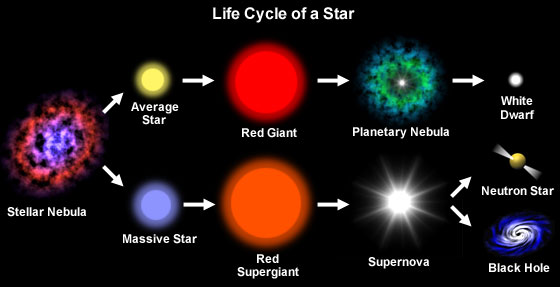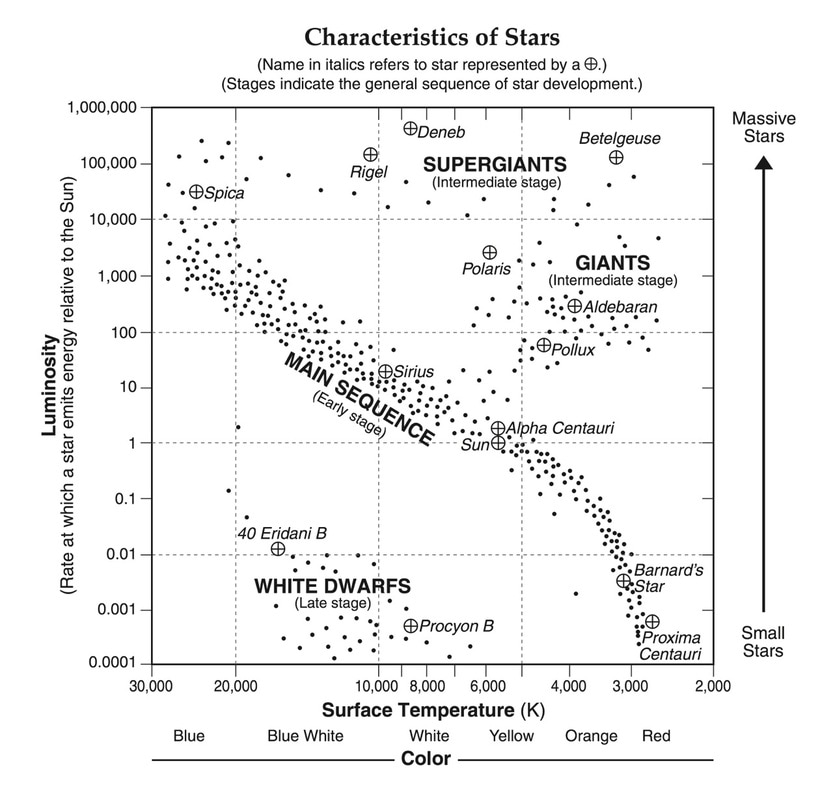The Big Bang was...
a a big explosion that created matter and the billions of galaxies of our vast universe.
The smaller an object is, the smaller the force of gravity. T/F
True
Which process generates the stars energy that is released by
(1) nuclear fusion
(2) thermal conduction
(3) convection currents
(1) nuclear fusion
Which color of visible light has the shortest wavelength?
blue
green
yellow
red
blue
 Which planet has completed less than one orbit of the Sun in the last 100 years?
Which planet has completed less than one orbit of the Sun in the last 100 years?
Mars
Mercury
Neptune
Uranus
Neptune
It contains all stars, galaxies, and planets.
1) World
2) Milky Way
3) Universe
4)Philippines
3) Universe
As one object gets closer to another object, the force of gravity will increase. T/F
True

a) in a nebula
Which of the following statements accurately describes the orbits of Jupiter and Mars?
1) Mars has a higher eccentricity so its orbit is more elliptical than Jupiter’s
2)Mars has a higher eccentricity so its orbit is more circular than Jupiter’s.
3) Mars has a smaller eccentricity so its orbit is more elliptical than Jupiter’s.
4) Mars has a smaller eccentricity so its orbit is more circular than Jupiter’s.
1) Mars has a higher eccentricity so its orbit is more elliptical than Jupiter’s
What is the name of the geometric shape that describes the planet's orbit?
Ellipse/oval
Which evidence best supports the theory that the universe was created by an explosion called the Big Bang?
(1) impact craters found on Earth
(2) cosmic background radiation
(3) the different compositions of terrestrial and Jovian planets
(2) cosmic background radiation
(2) cosmic background radiation
The Sun has a greater gravitational force than Jupiter. T/F
True
Which characteristics best describe the star Betelgeuse?
(1) reddish orange with low luminosity and high surface temperature
(2) reddish orange with high luminosity and low surface temperature
(3) blue white with low luminosity and low surface temperature
(4) blue white with high luminosity and high surface temperature
2) reddish orange with high luminosity and low surface temperature
Which sequence lists the Jovian planets in order of increasing mass?
A) Jupiter, Saturn, Uranus, Neptune
B) Uranus, Neptune, Saturn, Jupiter
C) Jupiter, Saturn, Neptune, Uranus
D) Neptune, Uranus, Saturn, Jupiter
B) Uranus, Neptune, Saturn, Jupiter
Using your reference table, what is the formula to calculate the eccentricity of a planet’s orbit(ellipse)
Distance between foci/Length of major axis
A major piece of evidence supporting the Big Bang theory is the observation that wavelengths of light from stars in distant galaxies show a
(1) redshift, appearing to be shorter
(2) redshift, appearing to be longer
(3) blueshift, appearing to be shorter
(4) blueshift, appearing to be longer
(2) redshift, appearing to be longer
How does Gravity depend on the mass of objects? Distance?
The greater the mass of the two objects and the closer the distance between two objects the greater the gravitational force.
Compared to the luminosity and surface temperature of red main sequence stars, blue super giants are:
1)less luminous and have a lower surface temperature
2)less luminous and have a higher surface temperature
3)more luminous and have a lower surface temperature
4)more luminous and have a higher surface temperature
4)more luminous and have a higher surface temperature
Which list of three planets and Earth’s Moon is arranged in order of increasing equatorial diameter?
A) Mercury, Mars, Earth’s Moon
B) Earth’s Moon, Mercury, Mars
C)Earth’s Moon, Mars, Mercury
D) Mars, Mercur, Earth’s Moon
B) Earth’s Moon, Mercury, Mars
Which characteristic of the planets in our solar system increases as the distance from the Sun increases?
(1) equatorial diameter
(2) eccentricity of orbit
(3) period of rotation
(4) period of revolution
(4) period of revolution
